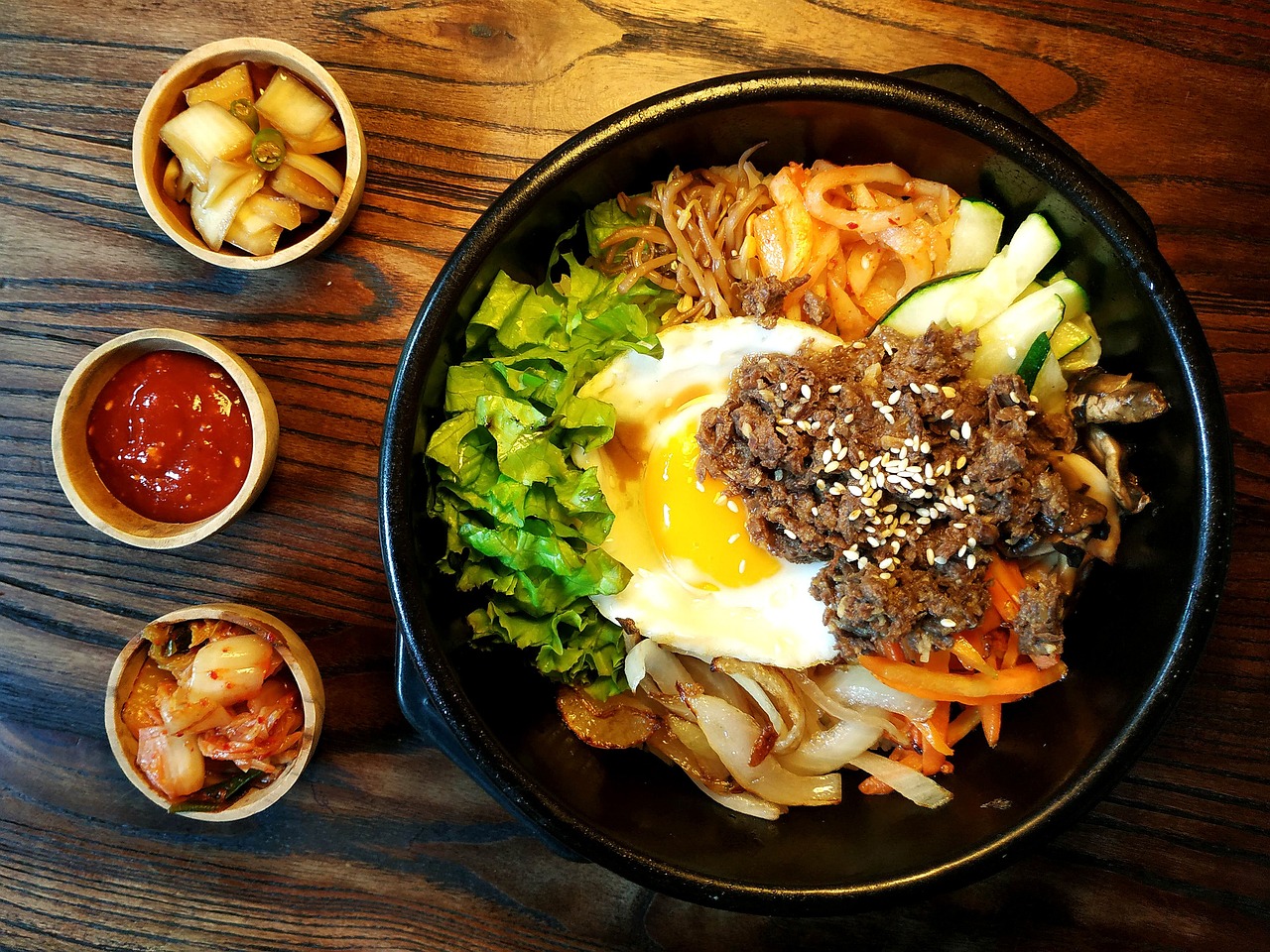Bibimbap, a traditional Korean rice dish, combines a variety of vegetables, marinated meat, a fried egg, and spicy gochujang sauce. Each bite is a mix of textures, flavors, and colors, making it both delicious and visually stunning. Follow this recipe to make an authentic bibimbap at home.
Ingredients:
- For the Rice and Toppings:
- 2 cups cooked white rice
- 1 cup spinach, blanched and squeezed dry
- 1 medium carrot, julienned
- 1 zucchini, julienned
- 1 cup bean sprouts
- 1/2 cup shiitake mushrooms, sliced
- 1 teaspoon sesame oil (for each vegetable)
- Salt and pepper to taste
- 1 tablespoon vegetable oil (for frying egg)
- 2 large eggs
- For the Meat (optional, typically beef):
- 1/2 pound ground beef or thinly sliced beef (sirloin or ribeye)
- 1 tablespoon soy sauce
- 1 teaspoon sesame oil
- 1 teaspoon sugar
- 1 garlic clove, minced
- 1/2 teaspoon ground black pepper
- For the Gochujang Sauce:
- 2 tablespoons gochujang (Korean red pepper paste)
- 1 tablespoon sesame oil
- 1 tablespoon sugar
- 1 tablespoon water
- 1 teaspoon rice vinegar
- 1 teaspoon sesame seeds
Instructions:
- Prepare the Rice:
- Cook the rice according to package instructions, then set it aside to cool slightly.
- Cook the Vegetables:
- Heat a small amount of sesame oil in a skillet over medium heat for each vegetable. Season each with salt and pepper, then cook each separately:
- Spinach: Sauté for 1-2 minutes.
- Carrot and Zucchini: Sauté each for 3-4 minutes until tender.
- Bean Sprouts: Sauté for 2-3 minutes.
- Mushrooms: Sauté for 3-4 minutes or until they soften.
- Heat a small amount of sesame oil in a skillet over medium heat for each vegetable. Season each with salt and pepper, then cook each separately:
- Cook the Meat (if using):
- In a small bowl, mix soy sauce, sesame oil, sugar, minced garlic, and ground black pepper. Add the meat, stirring to coat.
- Heat a pan over medium heat and cook the marinated meat for about 4-5 minutes or until fully cooked. Set aside.
- Prepare the Gochujang Sauce:
- In a small bowl, mix gochujang, sesame oil, sugar, water, rice vinegar, and sesame seeds. Adjust the sweetness or spice level to taste. Set aside.
- Fry the Eggs:
- Heat 1 tablespoon of vegetable oil in a small skillet over medium heat. Crack an egg into the skillet and cook until the whites are set but the yolk remains runny (or cook longer if you prefer).
- Assemble the Bibimbap:
- Divide the rice among two large bowls. Arrange the cooked vegetables, meat (if using), and fried egg on top of the rice.
- Drizzle with gochujang sauce.
- Serve:
- Mix everything together before eating to combine flavors and textures. Serve with additional gochujang sauce on the side if desired.
Tips for Perfect Bibimbap:
- Use Fresh Ingredients: Fresh vegetables bring out the best flavor and texture in bibimbap.
- Customize Toppings: Bibimbap is versatile—feel free to use other vegetables or protein such as tofu, chicken, or pork.
- Cook Components Separately: Cooking each ingredient separately allows you to control its texture and ensures a vibrant, colorful presentation.
Bibimbap is a satisfying and nourishing meal that’s easy to customize, making it perfect for both novice and seasoned home cooks. Enjoy this traditional Korean dish with a side of kimchi for an authentic Korean dining experience.
